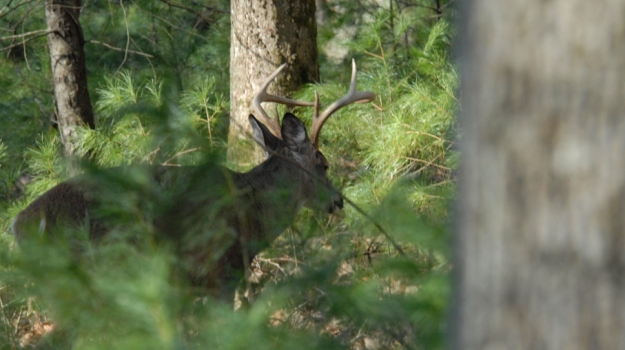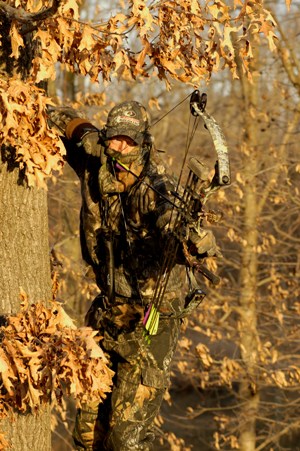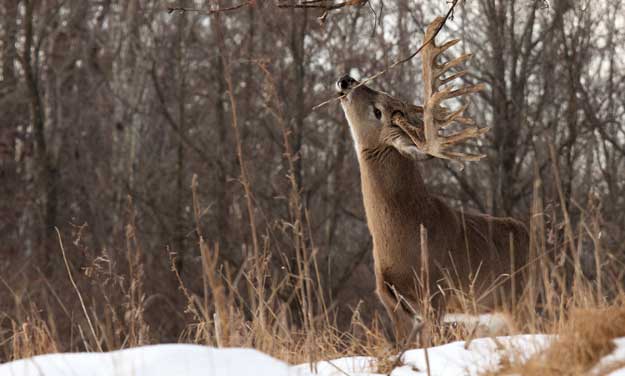
Editor’s Note: Dwayne Norton lives in Troy, Missouri, about an hour northeast of the arch in St. Louis. He’s been hunting deer for 35 years, and he's been a Mossy Oak pro for eight years. His favorite camo pattern is Mossy Oak Break-Up Infinity, although he uses several different Break-Up patterns. In 2015, Norton fulfilled a lifelong ambition of going elk hunting.
Five years ago I was hunting on 45 acres that my dad, David Norton, owns in Missouri, along with 55 acres right across the road. He manages the 55 acres for whitetails and turkeys because it butts up against a Wildlife Management Area (WMA). Most people might say that these two small properties aren’t big enough to hunt on, but we've learned that the size of the property we hunt is not nearly as important as the number of deer and turkey that feed and travel across that land. Also, we've learned if you have food plots and provide sanctuary near public lands, when the pressure on the public hunting lands increases, the deer and turkey will come to our small properties for food and sanctuary.
The weekend before rifle season opened in Missouri, I had a tree stand set-up in the corner of a pasture that also held about 5 acres of timber. We had our food plots set-up, so the deer funneled through that 5 acres of timber to reach the food plots. We had learned that deer like to move through thick cover to get to and feed in a food plot. Where you locate your food plots is critically important to deer-hunting success, particularly if you hunt the trails leading to the food plots.
 On this day, the weather was somewhat warm. I saw some deer running through the woods, and then they started running around my stand - some does with small bucks chasing them. Then I spotted a really-big buck coming toward me. I had a small opening out in front of my stand - having set-up my stand, hoping a deer would step in the opening, and I could arrow him. However, this buck was smart. There was a small cedar tree just before the buck reached the opening. The buck decided to go around the cedar tree, instead of coming through the opening. As he stepped into a smaller opening, I shot, but my arrow hit a little low of the spot where I’d aimed. The deer left a good blood trail. However, every time he came to a fence or low brush, he would go under the obstacle instead of jumping over it. Once the deer broke out of the timber, he went out into the pasture. I pulled out of following him, returned the next morning, picked up the blood trail, followed it through the woods out into the pasture and then trailed him through a small wooded draw. When I was within about 50 yards of a gravel road and our property line, I finally found the buck. He scored 142 with really-heavy antlers. His antlers weren’t very wide, but he was the biggest buck I'd taken on our Missouri farm.
On this day, the weather was somewhat warm. I saw some deer running through the woods, and then they started running around my stand - some does with small bucks chasing them. Then I spotted a really-big buck coming toward me. I had a small opening out in front of my stand - having set-up my stand, hoping a deer would step in the opening, and I could arrow him. However, this buck was smart. There was a small cedar tree just before the buck reached the opening. The buck decided to go around the cedar tree, instead of coming through the opening. As he stepped into a smaller opening, I shot, but my arrow hit a little low of the spot where I’d aimed. The deer left a good blood trail. However, every time he came to a fence or low brush, he would go under the obstacle instead of jumping over it. Once the deer broke out of the timber, he went out into the pasture. I pulled out of following him, returned the next morning, picked up the blood trail, followed it through the woods out into the pasture and then trailed him through a small wooded draw. When I was within about 50 yards of a gravel road and our property line, I finally found the buck. He scored 142 with really-heavy antlers. His antlers weren’t very wide, but he was the biggest buck I'd taken on our Missouri farm.
One of the things I've learned about hunting small properties is that when you arrow a buck on a small property, you don’t want him to travel off the land where you’ve shot him. Most of the time, if I don’t see a deer fall after the shot, I’ll back out and give the deer time to lie down. I might not go look for him until that night or the next morning, to keep from pushing him farther.
To learn more about hunting, check out John E. Phillips’ new eBook and print book, “Bowhunting Deer: Mossy Oak Pros Know Bucks and Bows.” You also can download a free Kindle app that enables you to read the book on your iPad, computer or Smartphone.
For information on making jerky from your deer to provide a protein-rich snack, you can download a free book from http://johninthewild.com/free-books.
Day 2: Dwayne Norton’s Kansas Whitetail That Scored 156
Tomorrow: How to Set Up Your Property to Take Nonresident Bucks






























